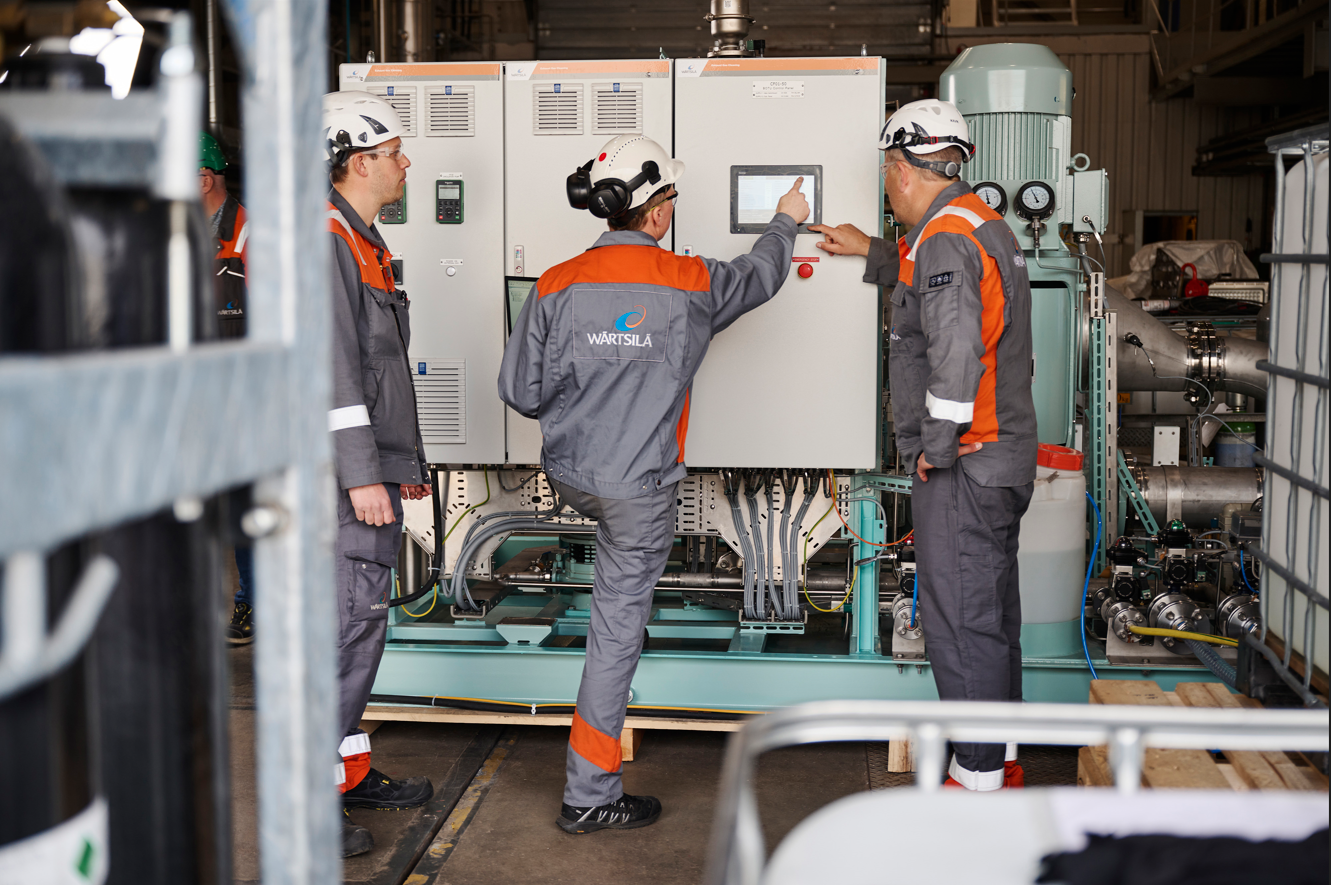
With CCS-Ready scrubbers now being sold at pace, Wärtsilä’s studies across a range of vessel types come as next step in rapidly accelerating trajectory for CCS in shipping
Technology group Wärtsilä is now offering carbon capture and storage (CCS) feasibility studies to shipowners and operators, in another milestone on its journey to research, develop and bring to market maritime CCS technologies. The studies have already been conducted on a range of vessel types including ro-ro and ro-pax vessels, a drill ship, a container vessel and a gas carrier.
The process takes four to six months of study and design work. Wärtsilä Exhaust Treatment’s experts are involved in ship design at an early stage to conduct engineering work to understand how CCS can be smoothly integrated once the technology is launched to market.
Wärtsilä is conducting the feasibility studies across both newbuild and existing vessels. Retrofit CCS installations will be significantly smoothed by the presence of a scrubber onboard. Wärtsilä Exhaust Treatment is already offering CCS-Ready scrubbers to the market, which are integrated onboard in a way that enables a CCS system to be added easily in the future once the technology is commercialised.
Once completed, the CCS feasibility study work enables Wärtsilä to provide customers with a fully rounded commercial offer that can be shared with shipyards to get an exact quote for installation. During the feasibility studies, Wärtsilä’s experts closely examine the existing naval architecture of the ship and work to understand how the power, space and exhaust demands of CCS can be accommodated onboard. Owners will receive a qualified analysis of the costs of CCS integration, and a clear list of considerations on how a potential retrofit would be conducted in the least intrusive way.
Conducting the studies today enables Wärtsilä to bring forward the early stages of CCS integration and, in doing so, lower the barrier to entry once the technology is commercialised in the near future. The studies also serve to educate customers on the upsides and particular considerations associated with installing CCS onboard their vessels. Finally, as the studies will run in parallel with the implementation of new environmental regulations for shipping, owners who conduct them today will be ‘ahead of the curve’ versus their peers.
Sigurd Jenssen, Director, Wärtsilä Exhaust Treatment, said: “Launching these feasibility studies and being able to offer them to market is the exciting latest step in our process of bringing carbon capture and storage to market in shipping. It builds on the market-leading work we are conducting in our test hall in Moss, where our technology is already demonstrating our targeted 70% capture rate, and enables us to directly engage with customers to smooth the CCS adoption process in the near future.”
Jenssen continued: “By conducting these studies today, we are already building a track record and understanding of how this technology will work across multiple vessel types. It builds on the considerable uptake we have already seen for our CCS-Ready scrubbers, which show that the industry is not only exploring CCS as a speculative technology, but is actively investing in its foundations as a decarbonisation solution. We look forward to conducting more of these studies in the coming months as we work to bring our CCS system to market.”
When a customer opts for a Wärtsilä CCS-Ready scrubber, the company takes measures during the scrubber installation process to ensure adequate space for the future installation of CCS system. CCS-Ready scrubbers are also designed to enable smooth integration with a Particulate Matter filter.